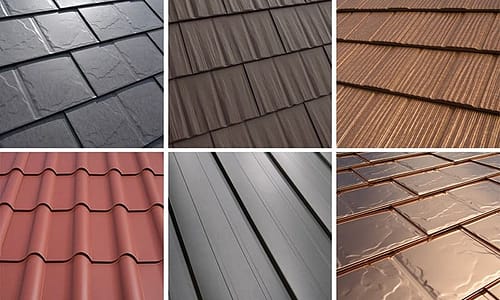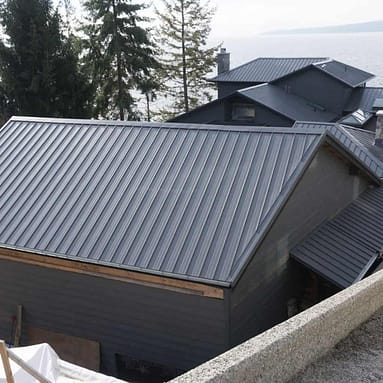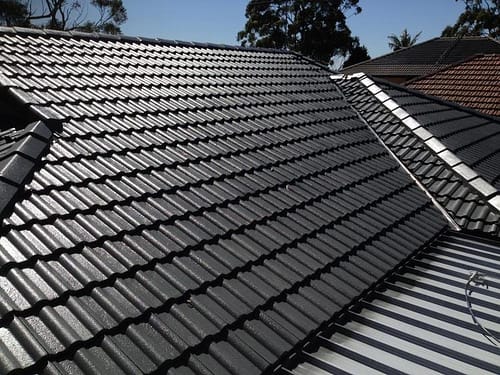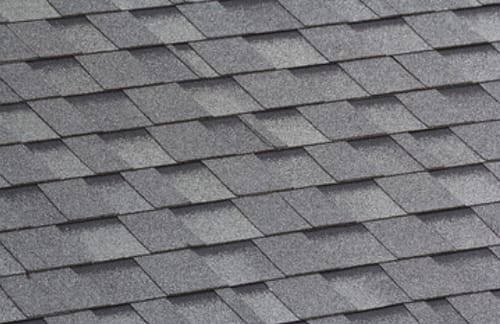The planning and design phase of a new roof can take more time than installing the covering itself. Before a commercial roofing contractor can start roofing, he/she will need to decide how to organize the installation. They will have established a process that makes production easy and maintains an offset in the joints between the shingles or other patterned roofing material in successive courses to prevent leaks. With an uneven roof design, this isn’t an easy fix.
There are two patterns a roofer can follow to organize the layout and installation of roofing material: racking and pyramid. No matter the pattern, its important that the installation of each pattern uses control chalk lines snapped on the underlayment and sometimes on the roof sheathing. Without horizontal and vertical control lines, it’s likely that the shingles (synthetic, wood shake, clay tile, or otherwise) will drift as the commercial roofer installs them, leaving the vertical and horizontal patterns of the roof looking uneven or crooked.
Of course, many roofs are more complex than a simple gable with two roof planes. A commercial roofing company will have to shingle around obstacles such as dormers and hops. It’s important that the roofer also marks a line perpendicular to the eaves on roofs without rake edges. Other situations aren’t as easy to deal with, such as roof edges that are severely uneven, crooked, or not parallel. These problems require compromise and extra layout time.
Fixing Uneven Roof Designs
There are simple solutions for eaves and ridges that are slightly out of parallel and solutions for crooked edges. These adjustments enable you to hide errors by adjusting the drip edges and varying the shingle overhang. When roof edges are very crooked or if the wood shake, clay tile, or asphalt shingles are significantly uneven, corrections are harder to make. But there are some tricks commercial roofer can use to make errors less obvious.
Misaligned Rakes
Rakes that are uneven or out of parallel by more than 1 1/2 in. can’t be adjusted by using the shingle overhang to conceal the error. The problem is highlighted by the straight, uniform pattern of vertical cutout slots in three-tab shingles. The best solution for the commercial roofer is to shingle the roof with random-pattern roof coverings such as laminated synthetic roofing system or multi-cutout. The contractor will then trim the shingles to roughly match the curve in a badly misaligned rake, and will use the shingle overhang to soften the error.
Crooked Eaves
Uneven or crooked eaves are a problem no matter what type of roof covering you use because the shingle butts will be out of alignment. However, the problem will be a bit less obvious with some laminated synthetic shingles that have tabs of different lengths to mimic shakes. As with rakes, if the variation is more than 1 1/2 inc., the roofer can’t correct it solely by adjusting the overhang. He/she could instead break the control line into short segments that approximate the curve of the eaves edge, then mark the successive control lines with diminishing curves until they can snap a straight control line and continue up the roof.
Crooked Ridges
Masking crooked ridges is done in the exact opposite fashion of correcting the eaves-edge error. The roofing contractor will mark out and install shingle courses with straight 5 in. exposures until they get within 3 ft. of the ridge. He/she will then measure down off the ridge to the top of the last shingle course to see how uneven the ridge is, then mark and snap the control lines in segments to create progressively greater curves in the shingle courses. Increasing the curve by 1.4 in. with each course until the control line roughly matches the ridge is the best solution for an uneven roof design like this.




